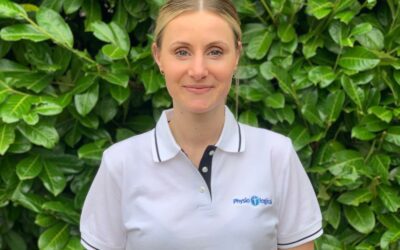It might be your Sacroiliac Joint!
As we are treating a lot of runners at our clinics at the moment due to training for London and Brighton marathons, we thought it would be good to share with you a common problem runners complain they have. This is a problem where your pelvis goes out of alignment, also known as Sacroiliac joint (SIJ) dysfunction. Pregnant ladies often have problems with their pelvis too due to hormone changes which relax the sacroiliac ligaments.
What is the SIJ?
The sacroiliac joints are the linkage between your lower spine and pelvis. The connection of your sacrum and the right and left iliac bones form the sacroiliac joints.
What is Sacroiliac Joint Dysfunction?
When your sacroiliac joints are not moving normally due to excessive movement or stiffness, it is referred to as Sacroiliac Joint Dysfunction, which normally results in sacroiliac pain.
It is important that you have both normal movement and muscle control around this area to avoid SIJ pain.
What are the Symptoms of Sacroiliac Joint Dysfunction?
- Lower back, hip, buttock, groin or sciatic (leg) pain
- Pain is often worse when walking, standing and running
- It can be painful getting in and out of the car and standing on one leg to get dressed
- Painful when lying on your side
- It can be painful bending, climbing the stairs and standing up from a seated position
- Reduced hip movement
- One leg feels heavy to lift
“After having a baby last year, I found that I had very limited outward rotation from the groin in one of my legs. My doctor dismissed it as a strained muscle, but I knew it was something more. Physio-logical instantly realised that my pelvis was slightly out of place and began effective treatment immediately. After a few sessions of manipulation and strengthening exercises, my pelvis and leg rotation were back to normal. Thank you so much for the fantastic treatment I received. I would highly recommend Physio-logical to anyone. I found them to be professional, friendly, knowledgeable and most of all effective” Mrs. E
Treatment
The best treatment for SIJ dysfunction is a thorough assessment to determine the cause of the pain.
It may be there is a dysfunction with the right SIJ which is causing left sided lower back pain.
Correction of pelvis alignment using mobilisation, manipulation and muscle energy techniques (manual therapy where the patient uses gentle muscle contractions then relaxes to allow muscles to lengthen and joints movement to normalise – guidance is given by your physiotherapist).
Exercises to strengthen your core and gluteal muscles once your pelvis alignment has been corrected.
Here are a couple of exercises you can try but it is always best to see an experienced therapist to correct the alignment before strengthening:
Please be aware of your body and take advice from your GP before exercising if you have lower back pain, pain around the back of your pelvis or hip pain then please get in touch for advice and guidance.
Bridge
The bridge is good for strengthening the core stability and gluteal muscles (buttocks).
Superman
This exercise helps strengthen core stability muscles.
Plank
This is an advance core stability exercise, so only try this if you are used to exercising or once your core stability has improved after doing the two exercises above.
If you have any aches, pain or niggles or even want advice about what you can do to reduce the risk of injury then please get in contact with us via enquiries@physio-logical.net or 07835 712306.







